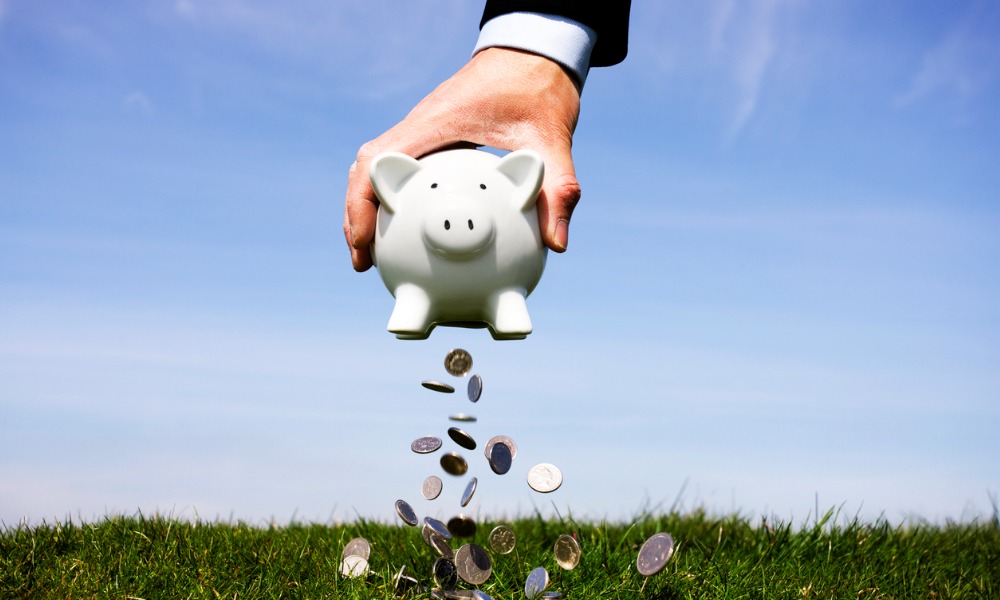Find out how to withdraw funds from your RRSP account in compliant and tax-efficient ways

- Can I withdraw my RRSP at any time?
- Can I cash out my RRSP before retirement?
- What are the negatives of withdrawing from RRSP?
- What’s the most tax efficient way to withdraw from RRSP?
- How to withdraw from RRSP as pension funds
- How to withdraw funds from RRSP under the Home Buyers' Plan (HBP)
- How to withdraw funds from RRSP under the Lifelong Learning Plan
Registered retirement savings plans or RRSPs are established to help a taxpayer prepare for retirement. But what happens if you need funds urgently? Can you withdraw RRSP funds at any time? What are the guidelines?
We’ll go over those guidelines in the article. We’ll share ways to withdraw from your RRSP account along with strategies for tax-efficient withdrawals. We’ll discuss some setbacks, too, when withdrawing from your RRSP. And finally, we’ll outline what you need to do to withdraw RRSP funds as retirement income.
Can I withdraw my RRSP at any time?
Yes, you can withdraw your funds from your RRSP account any time you want if it is not under a lock-in plan. This withdrawal could be subject to withholding tax. Plus, the amount to be withdrawn must be included as your income when filing your taxes.
Tax-exempt or tax-deferred withdrawal can be made in an RRSP account. There are two ways: first is by using the funds for education through the Lifelong Learning Plan. Second is by purchasing a house under the Home Buyer’s Plan. With these two programs, no withholding tax is required. Also, the withdrawal of your RRSP fund will not be considered as income.
Find out what is the RRSP withholding tax rate and how does it work in this article.
Can I cash out my RRSP before retirement?
Uncertain circumstances may occur in our life, and we may not be financially ready for it. This is where RRSP can help – you can withdraw your funds even before your full retirement age.
However, you will be paying an immediate tax on your withdrawal, and you are probably going to lose your contribution permanently. What this means is you cannot reinvest or put back the remaining withdrawn amount into your RRSP and regain the associated tax benefits.
What are the negatives of withdrawing from RRSP?
Aside from the taxable withdrawals and loss of contribution room, there are other disadvantages when you withdraw your RRSP contribution before your retirement. These setbacks include:
1. Negative impact on retirement savings
The main purpose of RRSP is to provide a source of income for retirement. Withdrawals made in earlier years can highly reduce the total amount that you can receive when you retire.
2. High tax bracket
There is a tax bracketing system that can be impacted by your RRSP contribution withdrawal. Once you proceed to withdraw, you can be added into a higher tax bracket for that fiscal year, which can generate higher taxes and might affect other aspects of your financial situation.
3. Long-term financial consequence
Withdrawing your funds from your registered retirement savings plan account can cause a big problem with your long-term financial goal. When this happens, it will be challenging for you to replace the withdrawn funds while continuously saving for retirement.
4. Reduced retirement income
Since you are unable to catch up on replacing the withdrawn funds and adding contributions at the same time, you may not have saved enough to sustain your foreseen retirement lifestyle.
5. Reduced benefits from the government
Early withdrawals of your RRSP funds can affect your government benefits like Age Credit and Guaranteed Income Supplement (GIS) due to your tax filing that is considered as a high-income earner.
What’s the most tax efficient way to withdraw from RRSP?
Tax payments are almost always attached to RRSP withdrawals. However, there are tax efficient ways for you to withdraw that lets you fully enjoy your hard-earned finances. Here’s how to withdraw from RRSP in tax-efficient ways:
1. Home Buyers’ Plan (HBP)
If you are planning to purchase a house, you can use your RRSP contribution funds and not pay any withdrawal fees through the Home Buyer’s Plan program.
You must first meet the eligibility criteria and the terms and conditions set by the Canada Revenue Agency (CRA). Also, after two years of your withdrawal, you will need to start your repayment that will last for fifteen years.
2. Lifelong Learning Plan (LLP)
The Lifelong Learning Plan allows you to withdraw your RRSP contributions tax-deferred because it is to be used for education funding. But just like the Home Buyer’s Plan, LLP funds must be paid back to your account within 10 years. Payments start after five years of your withdrawal.
3. Retire at low-income bracket
If it is possible for you to file for retirement when your income is still part of the lower bracket, it would be a clever idea to do so. By doing this, you can avoid getting hit by higher tax brackets.
4. Spread out withdrawals
Instead of bulking and making large withdrawals of funds in your full retirement age, you may consider doing staggered withdrawals to minimize the overall tax impact in your account. This will help you stay in the low earner tax bracket.
5. Split income with your spouse or partner
One advantage of opening an RRSP is that you can split your pension income with your spouse that has a lower income. When you take advantage of this option, you can experience a lower tax rate and even reduce the combined tax liability for both of you.
6. Delay receiving government benefits
If you are eligible for government benefits such as the Old Age Security (OAS) and Canada Pension Plan (CPP), you may want to delay receiving benefits from these two.
When you do that, you can potentially have higher benefit amounts in the future. Of course, it allows you to withdraw with less tax on your RRSP.
7. Take advantage of your non-registered investments
If you have any non-registered investments such as bonds, stocks, and mutual funds, you can use the funds earned in these ventures to supplement and sustain your retirement income.
8. Diversify your investments
Dividing your funds into other investment types will help you to benefit in several ways. By doing this you are not just relying on the withdrawals you can have from RRSP, you can also keep the tax to a minimum.
For a quick backgrounder, here’s what every Canadian should know about RRSPs.
How to withdraw from RRSP as pension funds
Once you’re ready to proceed with collecting your pension income, here’s how to withdraw from RRSP:
- Contact your financial institution and check your withdrawal eligibility. Before you can withdraw your funds, it is necessary to call the financial institution that holds your RRSP account. Ask them whether you are already eligible for withdrawal.
- Fill out withdrawal forms. Once you’ve been approved to withdraw your funds, you will need to complete the necessary withdrawal forms.
- Submit required documents. Your RRSP holder may ask you to provide additional documents. Be ready to comply – they may need to track the usage of your funds.
- Choose how you will receive your funds. This can be through a physical check or a direct deposit to your bank account. Make sure that you talk about this with your financial institution to avoid problems in the future.
- Double check withdrawal details. Go over the information you provided like the withdrawal amount, contact details, and the payment method. This is to ensure the accuracy of your withdrawal details.
- Be ready to receive the funds. Once everything has been processed, all you need to do is to wait. You will soon receive the funds according to your preferred withdrawal method.
- Track your records. After you receive the funds, do not forget to keep your records of withdrawals. You may use these for tax purposes especially when filing for your annual tax return.
Remember that the credit union, bank, or authorized financial services provider must withhold a portion of your withdrawal as tax. Withheld amounts differ according to the size of the withdrawal, and these serve as prepayment for your income tax.
How to withdraw funds from RRSP under the Home Buyers' Plan (HBP)
Here are the steps and requirements on withdrawing funds under the HBP:
1. Talk to your RRSP provider and check eligibility status
Before withdrawing your funds, confirm with your RRSP provider if you are eligible to withdraw your funds. You must also tell them that your reason for withdrawal is to purchase a new house.
2. Complete the T1036 form
Once you’re given assurance that you meet the requirements under the HBP, complete the T1036 form stating the request of HBP to withdraw funds from an RRSP account.
3. Provide proof of purchase
The house that you are planning to buy must be a “qualifying home” based on the rules and regulations stated in the HBP. One way to meet the RRSP withdrawal rules through HBP is by providing proof of purchase.
4. Submit the forms
5. Keep relevant documents for tax reports
Once your papers are processed, you will probably receive a T4RSP slip - a document that you will need to use when you report the withdrawal of your income tax return.
6. Repay the withdrawal
HBP requires you to repay the withdrawn amount in 15 years, with the first payment due two years after the day of your withdrawal. These repayments will not affect your contribution limits; they are considered contributions.
How to withdraw funds from RRSP under the Lifelong Learning Plan
Here are the rules for withdrawing funds under the Lifelong Learning Plan (LLP):
1. Check on eligibility with your RRSP provider
Before you can process your withdrawal through the LLP, you must first contact your provider and ask about eligibility. Make sure to tell them that you will be withdrawing under the LLP.
2. Get RC96 Form
You will be given an RC96 form that you need to fill out to request withdrawal of funds from your RRSP account.
3. Provide proof of enrollment
Your financial institution will request your proof of enrollment. Make sure you have this on hand – this will be submitted together with the Form RC96.
4. Submit forms and requirements
Submit the form and documents to your provider. Take note that this form will specify how much you will be withdrawing under the LLP.
5. Report on tax
When everything is ready to be processed, you will receive a T4RSP slip. You will use this to report your withdrawal on your income tax return.
6. Repay the withdrawal
LLP also requires that you repay your withdrawn amount, but this will only take up to 10 years. Also, the repayments are considered as contributions; they will not affect your contribution room.
Your RRSP can set you up well for retirement, but there may be situations where you’ll need to tap into this resource. It’s vital to know the guidelines on how to withdraw from your RRSP account.
We hope that this article has shed some light on this important aspect of maintaining an RRSP account. If you have any questions, contact your financial planner or RRSP provider for more information.
Read and bookmark our Retirement Solutions page for guidance and insights on investing for retirement.



